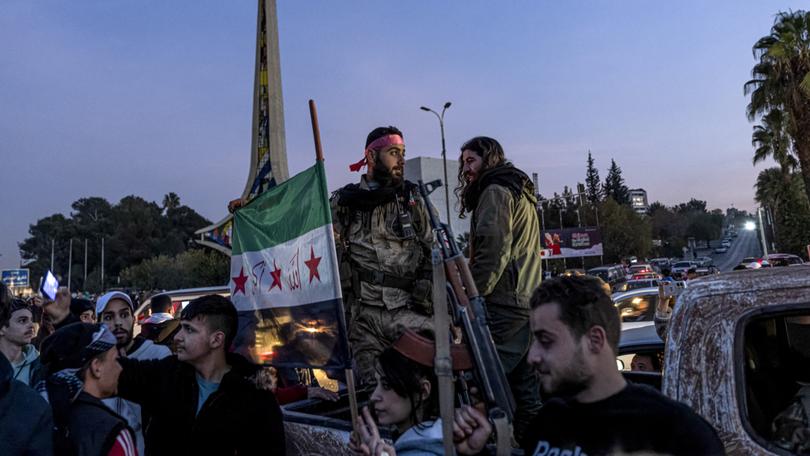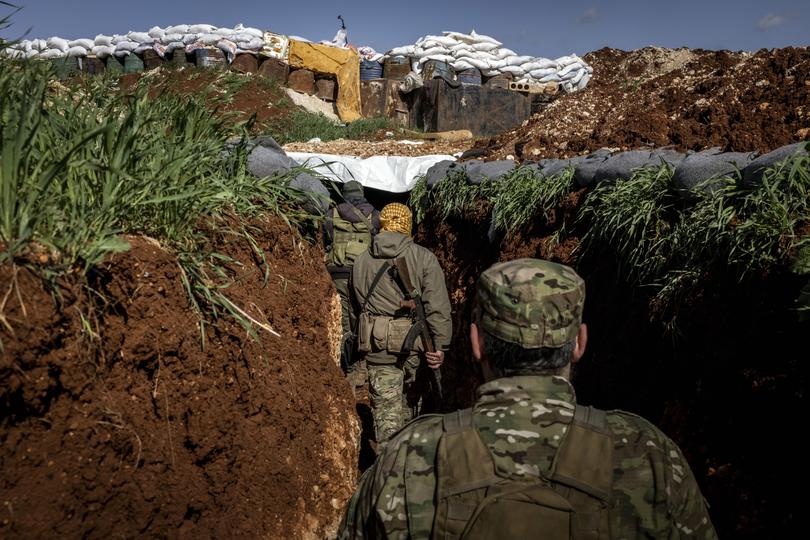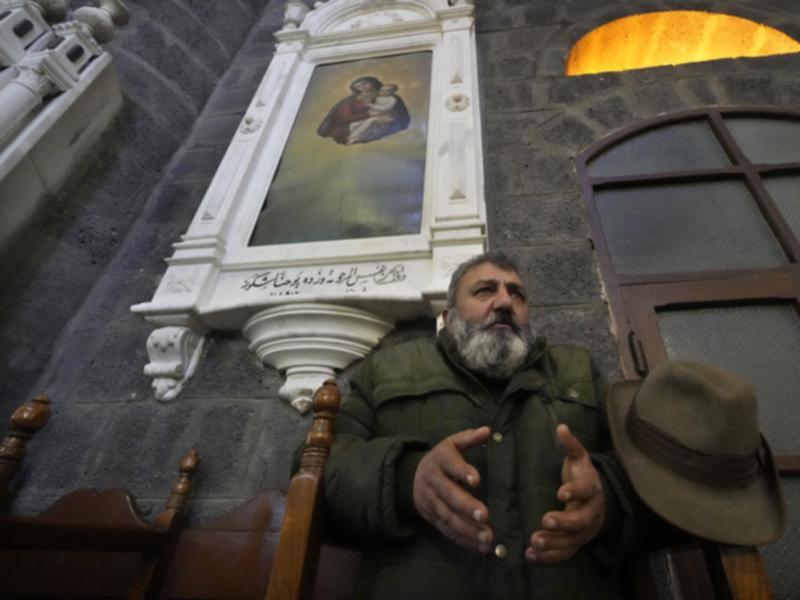THE NEW YORK TIMES: How will the Rebels rule Syria? Their past offers clues

Every fall, when farmers across the rolling, red dirt hills of Idlib province in northern Syria harvest their olive crops, they routinely find at least one representative of the local tax authority stationed at any oil press.
The tax collector takes at least 5% of the oil, and farmers grouse that there are no exceptions, even in lean harvest years.
The collectors work for the civilian government established under Hayat Tahrir al-Sham, the rebel movement that just spearheaded the swift overthrow of the 54-year Assad dynasty. The Islamist group has administered much of opposition-held Idlib province since 2017.
Sign up to The Nightly's newsletters.
Get the first look at the digital newspaper, curated daily stories and breaking headlines delivered to your inbox.
By continuing you agree to our Terms and Privacy Policy.Measures like the olive oil tax, introduced in 2019, have prompted protests and even occasional armed clashes and arrests.
Yet the Syrian Salvation Government, as the Idlib administration was known, persisted. It taxed goods entering its territory and generated revenue by selling fuel and running a telecom company. It also controlled the local economy through licensing regulation programs that looked a lot like a conventional government’s and proved that it was fairly adept at managing those finances to build up its military operations and provide civil services.
The portrait of the rebel group detailed in this article was gleaned from interviews with experts, representatives of humanitarian or other organizations working in the territory under its control, local residents and reports by the United Nations or think tanks.
Since 2017, Hayat Tahrir al-Sham and its affiliated organizations, driven by a hunger for broader power, created a certain level of stability in Idlib, governing with pragmatism and discipline. While the group retained overall control, it governed through a civilian authority with 11 ministries, which allowed it to concentrate on rebuilding its militia as a more structured force.
In Idlib, Hayat Tahrir al-Sham maintained a robust internal security force to confront other military factions and domestic critics, prompting regular protests against what were seen as authoritarian methods and against harsh jail conditions.
The primary question is whether these rebels, who are now trying to form a national government, can scale up what they achieved in Idlib, a poor, agrarian region with a relatively small population.

In Idlib, ministers who dealt with outside aid organizations could never make a decision on the spot, they always had to consult first with Hayat Tahrir al-Sham leaders, according to one representative of a humanitarian organization who asked not to be named because of the sensitivity of aid operations in the area. Such tight control might work in a small governorate, but could prove unwieldy in a large country.
With its roots in the Islamic State group and al-Qaida, Hayat Tahrir al-Sham modified and moderated its own jihadi orientation starting around 2016. While it enforced some conservative Islamic practices, they did not resort to the strictures imposed by the Islamic State terrorist group when it ruled parts of Syria.
Still, Hayat Tahrir al-Sham remains designated as a terrorist organization by the United States, the United Nations, Turkey and others. Because that designation blocked overt outside support, the group found new ways to sustain itself financially and militarily.
It levied fees on all kinds of goods and enterprises, including crops, border crossings, construction, trade, shopkeeping and craftwork. In addition, companies linked to the group enjoyed a monopoly on providing fuel, electricity, water and garbage collection.
“HTS exemplifies adaptability in conflict economics,” said Mark Nakhla, the chief research officer at Kharon, an open-source analytics firm that advises companies on complying with sanctions against armed groups and other hostile actors.
He has been tracking Hayat Tahrir al-Sham since its jihadi days, and has watched it go through what he called a “strategic rebranding” and a shift from relying financially on wealthy foreign donors to sustaining military and civilian operations through local taxation and governance.
It has largely driven more extremist groups out of the Idlib region, while still fighting and sometimes killing their members, according to a recent report by the Center for Strategic and International Studies, a Washington research institute.
The group also abandoned some previously used terrorist methods, like suicide bombings against military targets, said Orwa Ajjoub, a doctoral candidate at Malmo University in Sweden who studies Hayat Tahrir al-Sham.
Throughout its history, the group has been pushed and pulled between practical and more hard-line elements in its ranks, a tension that is likely to continue as it expands its rule.
“The hard-liner elements in the group have been sidelined,” Ajjoub said. “They want to rule and they are Islamists, but they are very pragmatic and really ready to interact with local communities.”
As the rebel fighters headed south toward Damascus, Syria’s capital, in their offensive that toppled Bashar Assad, their commanders gave them rousing speeches about reclaiming Syria, not about creating an Islamic state, said Charles Lister, the director for Syria and Countering Terrorism & Extremism at the Middle East Institute in Washington.
Training and a sense of mission seemed to instill an esprit de corps among the group’s mostly young fighters, experts said, while regular pay assured loyalty while minimizing looting or other shakedowns.
“For them, discipline and respect is a key piece of their worldview,” said Aaron Y. Zelin, an expert on jihadi groups with the Washington Institute for Near East Policy and the author of a book about Hayat Tahrir al-Sham.
Raising funds like a Government
Because the national government in Damascus tried to isolate rebel-controlled areas in the north, those regions had to rely on Turkey for basic services like water, electricity and cellular transmissions. Hayat Tahrir al-Sham set up ostensibly private distribution companies, but the owners were closely linked to the organization, according to aid groups and experts.
Their key source of revenue, however, was likely customs duties and other fees collected at the Bab al-Hawa border crossing, the main gateway into northwestern Syria from Turkey. The group did not publish figures, but humanitarian organizations working in Idlib and others estimate it may have generated $15 million or more per month.
In some cases, Hayat Tahrir al-Sham encouraged local residents to start businesses, including some that competed with its own telecom and energy companies.
Hussam Twilo, an Idlib entrepreneur, told The New York Times that he started a company, Syriana LTE, in 2016 and began putting up cellular towers in areas that did not get coverage from established companies. After Hayat Tahrir al-Sham took power, it gave Syriana a license to operate, he said in a phone interview.
Now, Syriana competes with Hayat Tahrir al-Sham’s Syria Phone telecom company, Twilo said, without friction.
“Their mentality is to support the private sector,” he said. However, he said he was bracing for major changes, including more taxation, once the former rebel group begins exercising nationwide control.

Something akin to a regular army
When it came to military strategy, Ahmad Hussein al-Sharaa, the leader of Hayat Tahrir al-Sham who previously went by the nom de guerre Abu Mohammed al-Golani, abandoned the ideology that his group should concentrate on fomenting a global jihad against the West.
Instead, he focused on freeing Syria of the Assads, a goal that started in 2011 with the anti-government uprisings across the country that jihadi groups soon came to dominate.
In 2021, he made one of his most important moves by establishing what was called simply the Military College. Officers who had defected from the Syrian military helped mold his fighters and other ragtag groups of militiamen from around Syria into something akin to a regular army with an established chain of command.
“They became much closer to being an army than just a bunch of armed groups,” said Jerome Drevon, a senior analyst on jihad and modern conflict with the International Crisis Group.
They studied manuals of Western military doctrine posted online by various armed forces and tried to largely follow the British model, he said.
Their main source of weapons was what they captured from Syrian military bases or in battles with other militias, and over the years, that provided the core of their arsenal, experts said. Corrupt officers from the Assad regime also sold them arms, while Turkey provided trucks and light weapons to allied militias in northern Syria.
Some Turkey-backed militias joined forces with Hayat Tahrir al-Sham in the offensive that overthrew the government. Turkey was believed to have held a certain amount of sway over the group’s military campaigns with at least 10,000 troops in Idlib province and many more nearby, Devon said.
Now Turkey is emerging as one of the main beneficiaries of Assad’s ouster on the international stage.
Like any guerrilla movement, the group’s main need was for light weapons or artillery as well as transport vehicles, and Lister of the Middle East Institute said the group even manufactured its own rudimentary armored vehicles.
Experts estimated the overall numbers of fighters in Hayat Tahrir al-Sham ranged from 10,000 to 60,000. But the core was probably around 10,000 to 15,000 with about an equal number of reservists.
“They decided to totally restructure the way that they were organized,” Drevon said. “Their brigades were formed as specialized units with different functions like infantry, mortars, etc. In addition, it was much more centralized.”
The group’s most remarkable development was the assembly of a drone unit. The rebels said they acquired some of the drones and manufactured others themselves.
How the Rebels Governed in Idlib
In terms of its methods of control, the rebel group frequently left local authorities in place, especially in villages controlled by religious minorities.
Syria is a complicated patchwork of diverse hamlets. A predominantly Sunni Muslim nation of more than 23 million people, it has considerable minorities of Shiite Muslims, Christians and Druse, as well as the Alawite sect that dominated Syria under the Assads. In Idlib, the prewar population of 1.5 million swelled to 3.5 million with displaced people from around Syria mostly living in tent camps, according to U.N. figures.
Hayat Tahrir al-Sham did not use the brutal methods used by more extremist groups to enforce Islamic practice.
The Islamic State group, for example, was intolerant of any deviance from what it considered Islamic law. Some violators were executed, while convicted thieves had a hand amputated.
Hayat Tahrir al-Sham does not fit into that box.
Buying and selling alcohol was banned, but residents said the group did not try to root out drinkers, and people were allowed to smoke in public. The group did not field morality police to enforce strict social codes.
In a conservative society, they did maintain elementary schools segregated by sex. The rebels also set up a chain of free Koranic schools called the House of Revelation, which teach both theology and regular subjects like math and English.
At one point, hard-liners objected that a new shopping mall built under Hayat Tahrir al-Sham’s auspices was sinful because it allowed men and women to mingle in public, said Ajjoub, the doctoral candidate.
But the Idlib leaders overruled them.
This article originally appeared in The New York Times.
© 2024 The New York Times Company
Originally published on The New York Times
